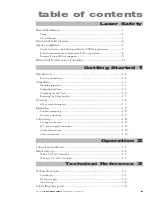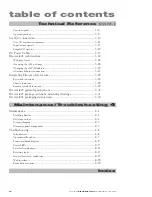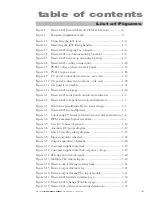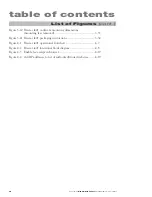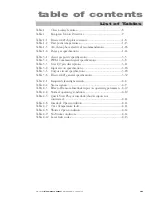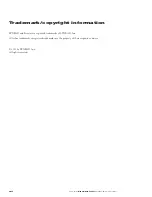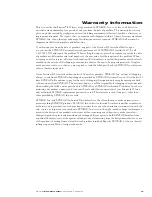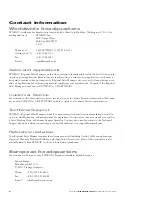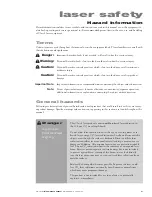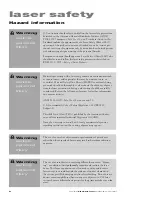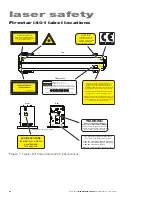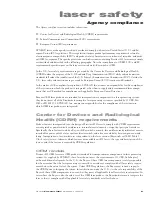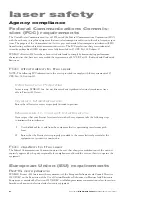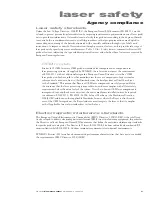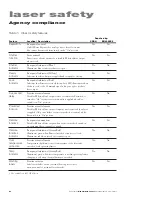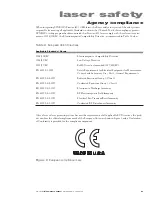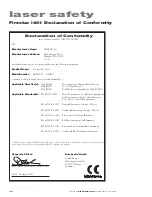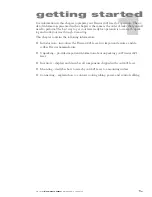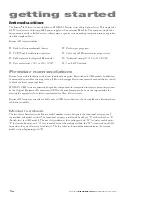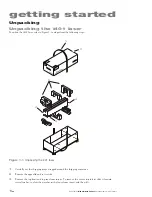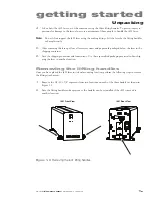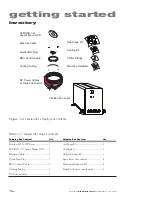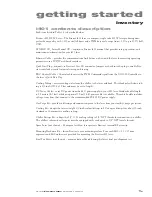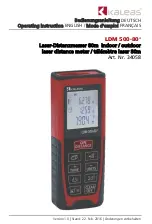
laser safety
2
Synrad
Firestar i401
operator’s manual
Hazard information
Warning
serious
personal
injury
U.S. customers should refer to and follow the laser safety precautions
described in the American National Standards Institute (ANSI)
Z136.1-2007 document,
Safe Use of Lasers
. Procedures listed in this
Standard include the appointment of a Laser Safety Officer (LSO),
operation of the product in an area of limited access by trained per-
sonnel, servicing of equipment only by trained and authorized person-
nel, and posting of signs warning of the potential hazards.
European customers should appoint a Laser Safety Officer (LSO) who
should refer to and follow the laser safety precautions described in
EN 60825-1, 2007—
Safety of Laser Products
.
Warning
serious
personal
injury
Materials processing with a laser can generate air contaminants such
as vapors, fumes, and/or particles that may be noxious, toxic, or
even fatal. Material Safety Data Sheets (MSDS) for materials being
processed should be thoroughly evaluated and the adequacy of provi-
sions for fume extraction, filtering, and venting should be carefully
considered. Review the following references for further information
on exposure criteria:
ANSI Z136.1-2007,
Safe Use of Lasers
, section 7.3.
U.S. Government’s
Code of Federal Regulations
: 29 CFR 1910,
Subpart Z.
Threshold Limit Values
(TLV’s) published by the American Confer-
ence of Governmental Industrial Hygienists (ACGIH).
It may be necessary to consult with local governmental agencies
regarding restrictions on the venting of processing vapors.
Warning
serious
personal
injury
The use of controls or adjustments or performance of procedures
other than those specified herein may result in hazardous radiation
exposure.
Warning
serious
personal
injury
The use of aerosol dusters containing difloroethane causes “bloom-
ing”, a condition that
significantly expands and scatters the laser
beam. This beam expansion can effect mode quality and/or cause
laser energy to extend beyond the confines of optical elements in
the system, possibly damaging acrylic safety shielding. Do not use air
dusters containing difloroethane in any area adjacent to CO
2
laser
systems because difloroethane persists for long time periods over wide
areas.





